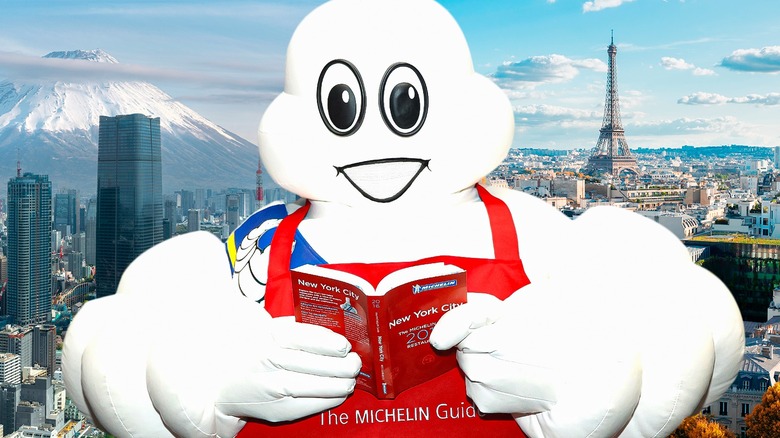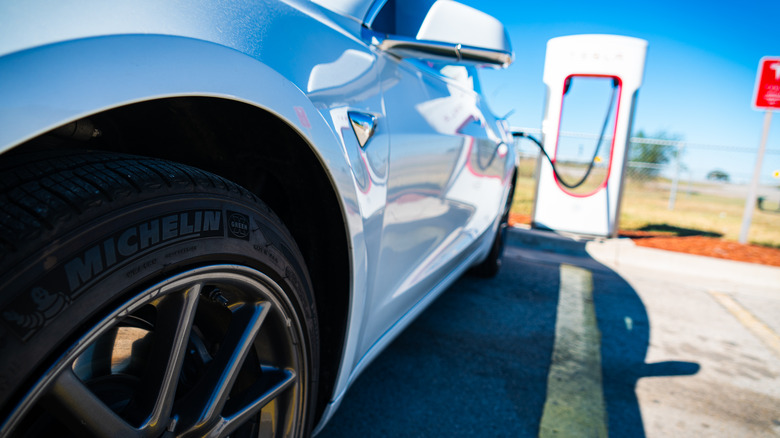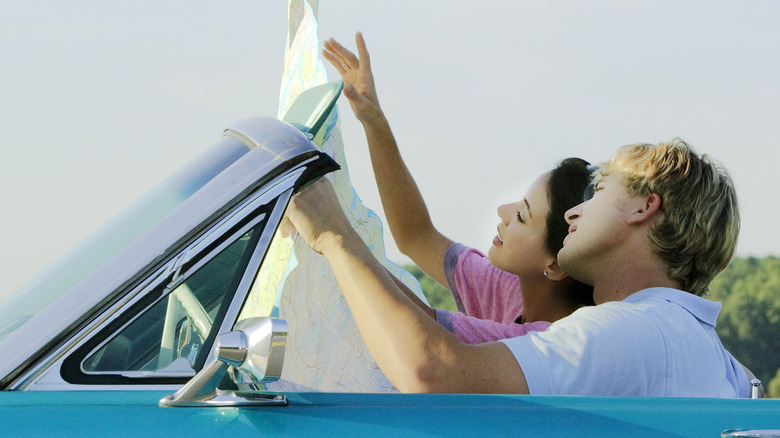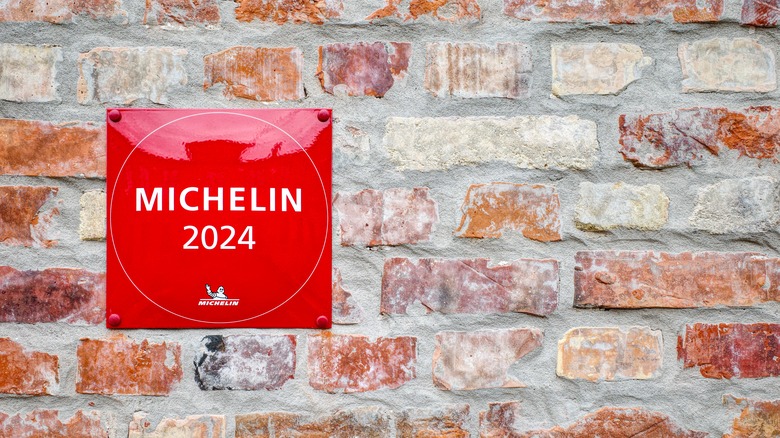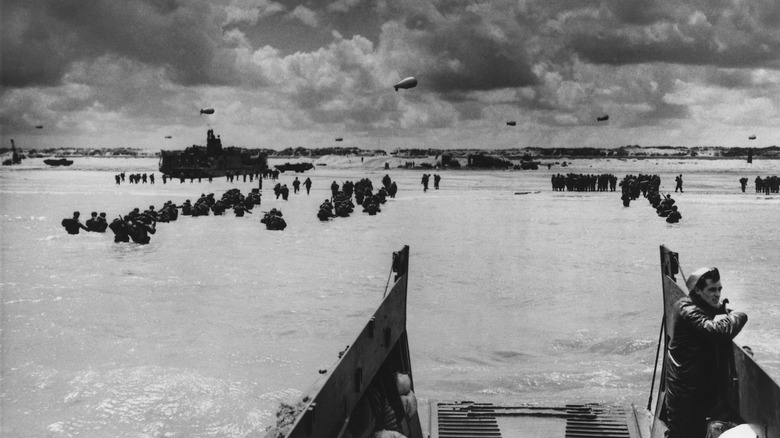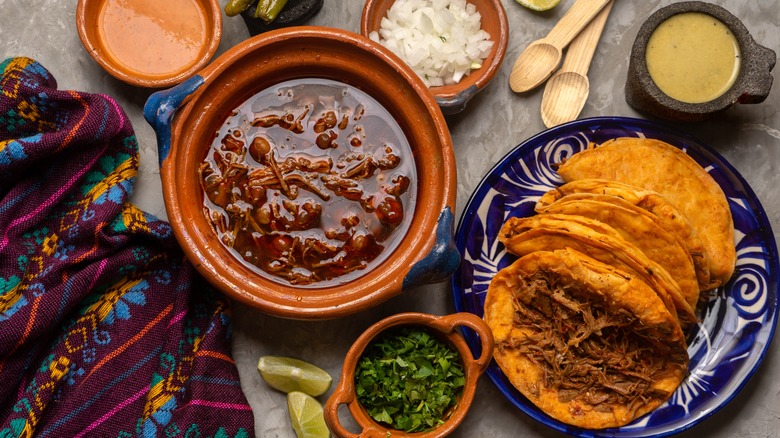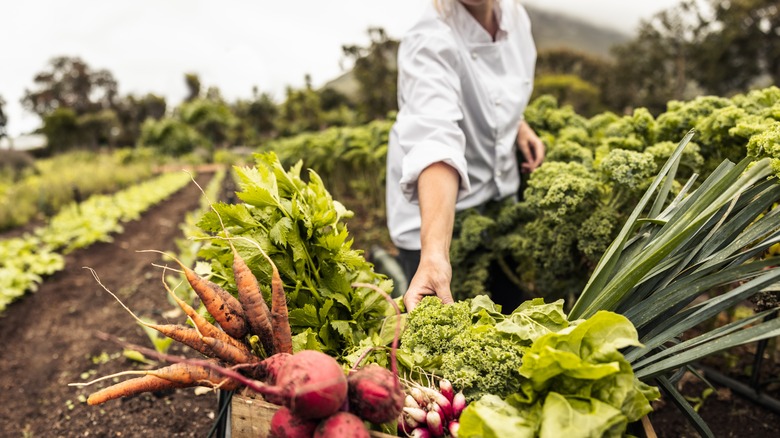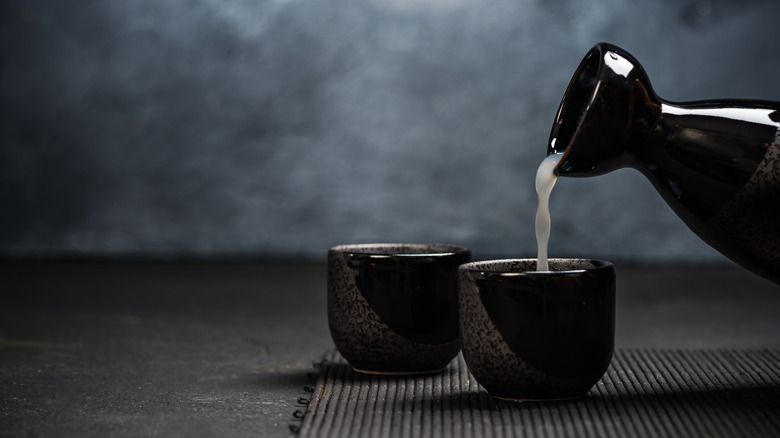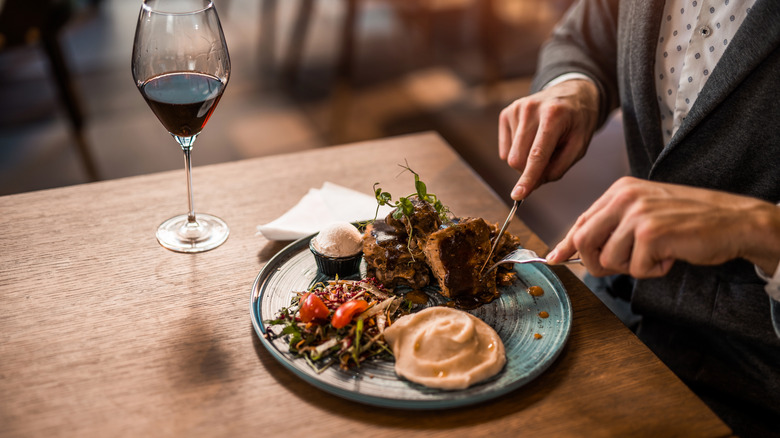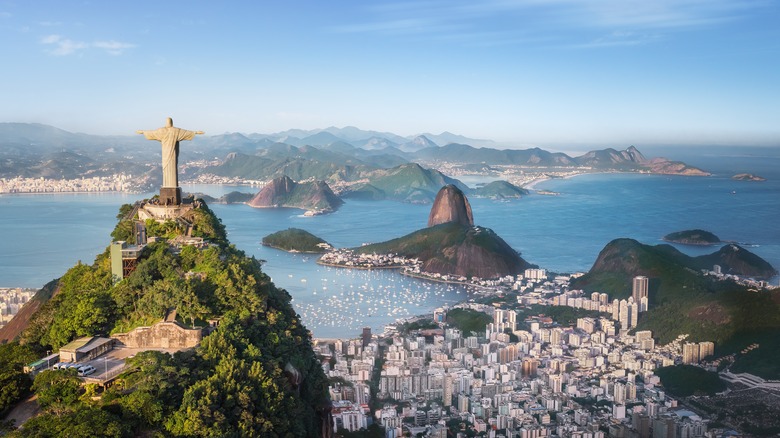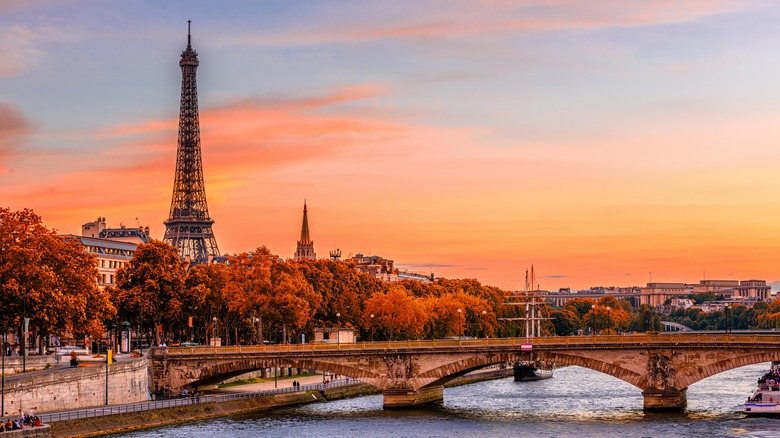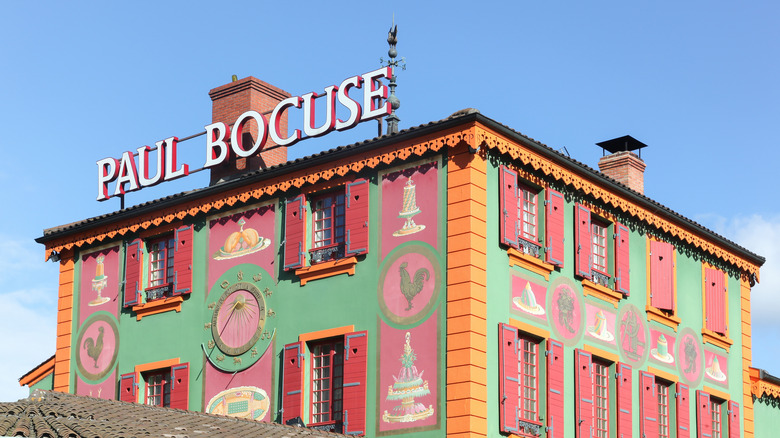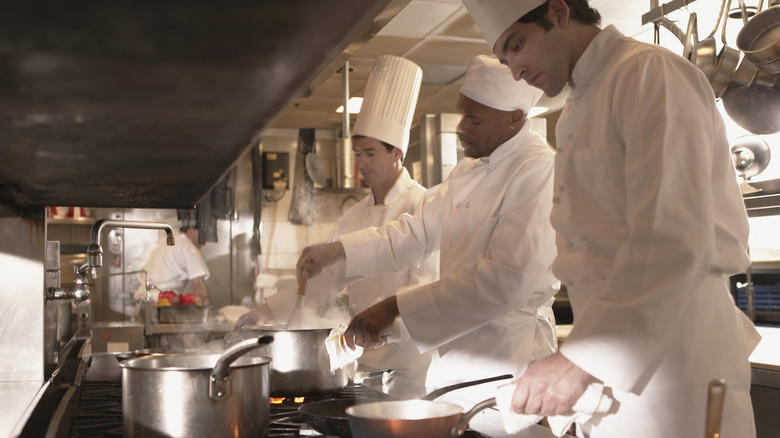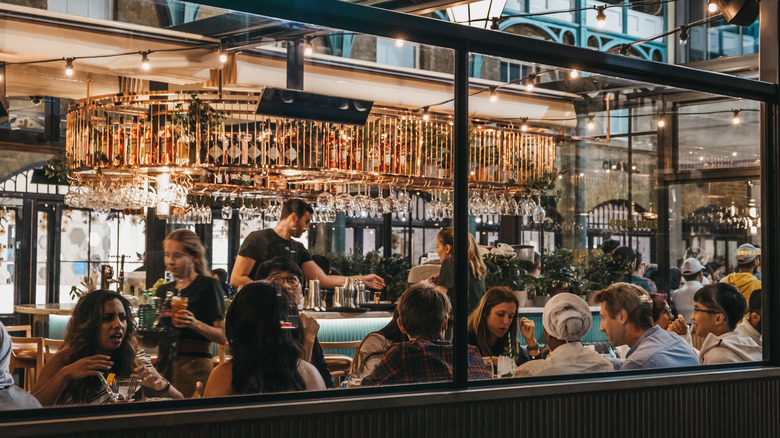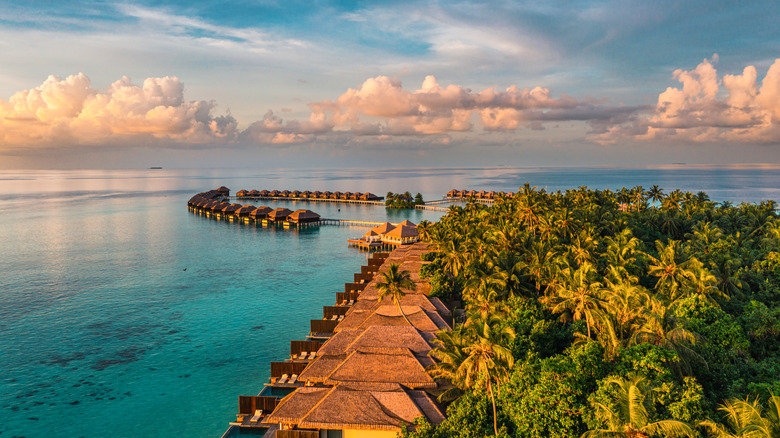15 Facts You Should Know About The Michelin Guide
Every foodie worth their hand-harvested sea salt knows the iconic Michelin Guide, with its puffy mascot, unmistakable red cover, and star system that can change a chef's life overnight. It is the epitome of culinary ranking and is synonymous with fine dining.
But what do you really know about the guide's history, mystery diners, shiny stars, and controversies? There's a lot that goes into making that little red book, and that's before you even think about what it takes for a kitchen team to prepare a meal worthy of its pages.
Of course, you wouldn't be a foodie if you didn't want to know how it all works. Here's everything you need to know about how the Michelin Guide got its start on the early roads of France, the secret force of reviewers making chefs' dreams come true, and the longstanding tradition that sets the bar for culinary excellence around the world.
Yes, it is affiliated with the Michelin tire company
It seems like an odd association, but the Michelin Guide is, in fact, affiliated with Michelin Tires. Brothers André and Édouard Michelin took over their family's rubber company in 1889, just as cars were coming onto the scene. They put the first tires on a car in 1895 (previously, cars had wheels like wagons instead of tires like bicycles), and built a brand around their product that included a travel guide for France's new drivers: The Michelin Guide.
The Michelin Man even gets his iconic silhouette from a stack of tires, not marshmallows (that's "Ghostbusters'" Stay-Puft). His name, Bibendum, comes from the Latin phrase "Nunc est Bibendum," or "now is the time to drink." Bibendum was included in an advertisement featuring that phrase, implying that Michelin's air-filled tires drink up the bumps in the road. A fitting slogan for a mascot who would come to represent some of the finest in food and drink around the world!
It started out as a travel guide for early motorists
As they took the automobile world by storm with their tires, the Michelin brothers used their marketing savvy to find a new way to drive tire sales (pun intended). They decided to create a travel guide for French motorists, encouraging people to travel by car around the country — thereby using and needing tires.
The first guide was published in 1900 and was designed to help motorists with tips on tire maintenance and the addresses of tire shops, gas stations, and hotels to plan their trips. All of that was available for free until 1920. According to the Michelin Guide, "André Michelin arrived at a tire shop to see his beloved guides being used to prop up a workbench. Based on the principle that 'man only truly respects what he pays for,' a brand new Michelin Guide was launched in 1920 and sold for seven francs."
Today, those red-bound books can still be found in bookstores around the world. The Michelin Guide prints 28 titles, some covering countries (i.e. Italy) or groups of countries (i.e. Spain & Portugal), while others focus on specific cities or regions (i.e. Paris or Main Cities of Europe). And of course, there's a Michelin Guide app; a searchable resource featuring every restaurant included in the guides, as well as restaurant and hotel booking features and expert assistance — the Michelin brothers' guide for a new generation.
The first Michelin Stars were awarded in 1926
As travelers began purchasing the Michelin brothers' red book, restaurant recommendations became a primary attraction. The listings were updated to feature a star to denote the finest establishments. Mystery diners visited restaurants to vet potential inclusions and provide insight — the earliest iteration of today's mystery reviewers.
In 1931, the guide began ranking restaurants with a three-star system, and in 1936 the criteria was formally established. In a twist that might surprise today's diners, the second and third star were introduced in France's provinces before they came to Paris in 1933, proof that the guide's focus was those traveling by car.
Because the Michelin Guide was geared toward drivers, the ranking reflected just how far someone should go to seek out any given restaurant, with one star awarded for "high quality cooking worth a stop," two stars for "excellent cooking, worth a detour," and three stars for "exceptional cuisine, worth a special journey," per the website.
D-Day forces brought the Michelin Guide with them to liberate France
Not surprisingly, publication of the Michelin Guide halted during World War II. But when the Allied Forces landed in Normandy to liberate France, they did so with the Michelin Guide in hand — though they weren't looking for restaurants.
Throughout the war, many road signs had been destroyed or taken down, leaving Allied leaders wondering how soldiers would make their way through the country. The solution? Reprint the 1939 edition of the guide and distribute it amongst the officers. Because the Michelin Guide was still a travel guide at this point, it featured highly detailed maps that were updated yearly, providing an all-in-one resource for motorists as well as the liberating forces.
Once Paris was liberated, Michelin's map-making offices produced equally detailed maps of the north and eastern parts of France plus Belgium and Germany for the next steps of the liberation effort. And just a week after V-E Day on May 8, 1945, the next (though much abridged) version of the Michelin Guide, which had been prepared during the war, was printed and distributed.
The 3-star system hasn't changed much, but the restaurants included sure have
When the Michelin Guide's three-star system was first introduced, the guide only covered restaurants in France and Belgium. Early stars denoted that restaurants featured haute cuisine — which was still finding its footing through the beginning of the 20th century — but had just started to rank those establishments further.
In the following decades, the Michelin Guide expanded to cover additional European countries, but it wasn't until 80 years after the first Michelin stars were awarded that the guide began to expand further afield, heading to New York in 2006 and Japan in 2007. The star ranking, though, continued to focus on haute cuisine even as the number of included restaurants grew.
When the Michelin Guide turned 90 in 2016, a star was awarded for the first time to a restaurant that was decidedly not haute cuisine: Hong Kong Soya Sauce Chicken Rice and Noodle, a hawker stall in Singapore helmed by chef Chan Hong Meng. A year later, it awarded a star to Jay Fai's crab omelets and curries in Bangkok.
While the jury is out on whether this recognition is helping or hurting these smaller establishments that suddenly see a dramatic increase in customers nearly overnight — Jay Fai famously said she wanted to give her star back — we can't argue with the value of recognizing culinary excellence at every echelon, not just the very highest.
The Bib Gourmand is a great resource for today's cash-strapped foodies
While restaurants don't have to come with a high price tag to get a star, Michelin's Bib Gourmand is an award for restaurants specifically in a more affordable price range — making them a modern traveler's best friend. From 1955 to 1996, these locations were marked with a red "R" in Michelin Guides, but in 1997 the Bib Gourmand icon — Michelin's Bibendum mascot, licking his lips — was introduced.
Though the specific price varies by region, quality and value for money are at the core. In the United States, Bib Gourmands have been awarded to places like Russ & Daughters Café in New York City, Hop Alley in Denver, La Tejana in Washington, D.C., and Birrieria Zaragoza in Chicago. The boundary-pushing expectations of a Michelin star are loosened, but the food is still phenomenal (and will likely save you a little cash).
The Michelin Green Star is all about sustainability
In 2020, Michelin revealed the Green Star, an award designed to recognize sustainability within the restaurant industry. The first Green Stars were awarded in 2021, and as of January 2024, nearly 500 restaurants worldwide now hold the Green Star distinction.
According to Michelin, these restaurants hold themselves to a higher standard of ethical and environmental practices. At a Green Star restaurant, diners can expect an incredible meal they can feel good about. A restaurant may forage ingredients, focus on seasonal produce, emphasize recycling and composting, or go above and beyond in supporting charitable projects. The cuisine could be plant-based or use carefully sourced proteins, and can range from traditional recipes to the peak of advanced cooking techniques. At its core, it must stand for culinary and restaurant practices that support and better the planet, such as working with sustainable producers and eliminating plastics from its supply chain, and is expected to set the standard for others in the hospitality industry.
Additional symbols denote a restaurant's special characteristics
While Michelin stars are the epitome of the guide's awards, Michelin also uses other symbols to help people find their perfect dining destination. The guides offer insight into a restaurant's comfort level, whether they have a notable wine or beer list, and even if they've got killer cocktails.
Michelin stars are awarded for food and food only, but that doesn't mean the mystery diners ignore the ambiance. In addition to possible stars or Bib Gourmands, restaurants receive one to five covers, or Comfort & Quality ratings, represented by a fork and spoon icon. The ratings range from comfortable to luxurious, and a luxurious restaurant doesn't necessarily also have three stars.
If an establishment should be sought out for its beer, wine, sake, or cocktails, icons in the guide will let you know — think great pubs in Ireland or the best sake selection in Tokyo. The Spain guide even features a wine and toothpick icon for must-visit tapas bars.
Mystery inspectors run the show
The Michelin Guide wouldn't be what it is without the people who make all the reviews happen. Since 1933, Michelin Guide inspectors have anonymously visited restaurants to select which establishments would appear in the guide — and, more importantly, to decide who gets a coveted Michelin star.
Five criteria guide a Michelin inspector in ranking a restaurant and handing out stars, and all are focused on the food and cooking: "The quality of ingredients; the mastery of culinary techniques; the harmony of flavours; the personality and emotion that the chef conveys in the dishes; and consistency throughout the entire menu and across different visits," per the website. After each meal, they file detailed reports on each element.
The inspectors use aliases to make reservations. They often dine alone, though the hard work of assigning stars to restaurants is done as a group after multiple inspectors have visited an establishment. Most often former restaurant industry professionals (like chefs, managers, or wine experts), inspectors dine out for up to 300 meals per year, traveling three weeks out of the month to visit everything from luxurious restaurants hoping to maintain a three-star ranking to a street food stall that has set the culinary world abuzz.
The Michelin Guide is constantly expanding
The very first Michelin Guide included only France, with Belgium being added in 1931 when the three-star system first appeared. As of January 2024, Michelin covers restaurants in 45 countries across Europe, Asia, the Middle East, and North and South America. Not all countries have printed Red Guides. Some are combined, such as Great Britain and Ireland or Belgium and Luxembourg, while others are broken down into specific regions — like Beijing, Dubai, and Washington, D.C. That list of included countries is also constantly in flux. Mexico will see its first list of Michelin-ranked restaurants in early 2024, and the guide will return to Brazil as well.
Some guides have been suspended over the years, for economic reasons or as a result of global circumstances like the COVID-19 pandemic and war. Russia was previously included as part of the guide but was suspended from inclusion in 2022 after Russia invaded Ukraine.
As of yet, the Michelin Guide does not rank restaurants on the African continent. Local, regional, and national tourism boards (among others) contribute financially to the guide's presence in a given area, so restaurants cannot be ranked if their region is not one that is officially covered.
France and Japan reign supreme
The Michelin Guide may be available in 45 countries (at the time of writing), but two are far ahead of the pack when it comes to total number of stars. So if you're on a quest for a Michelin-starred meal, head to France (of course) or Japan.
According to the website, France is home to 514 one-star restaurants, 70 two-star restaurants, and 29 three-star restaurants throughout the country. This gives the guide's home country a grand total of 613 stars as of January 2024. Though the Michelin Guide did not arrive in Japan until 2007, the island nation has a reputation for being a culinary destination. Japan has 310 one-star restaurants, 65 two-star restaurants, and 21 three-star restaurants (that's 396 total stars, if you're counting).
If you're going to pick a single city to visit on your Michelin tour, the concentration of starred restaurants in Tokyo currently outranks the total in Paris. Tokyo has 183 starred restaurants (12 with three stars), while Paris has 129 starred restaurants (nine with three stars).
One chef maintained three-star status for 55 years — but his record is about to be broken
While the guide has not been published everywhere since 1900, a few French chefs have set a high bar when it comes to attaining and holding on to a three-star rating. A few have even maintained that record for decades of culinary excellence. Chef Paul Bocuse's L'Auberge du Pont de Collonges first achieved three-star status in 1965. The restaurant kept all three stars for an incredible 55 years — including two years after the chef's passing in 2018 — until dropping to a two-star rating in 2020.
But Bocuse's record is at risk. In Roanne, France, the Troisgros family has maintained a three-star ranking at their eponymous restaurant since 1968, over four generations of Troisgros chefs. If they continue to garner a three-star ranking in 2024, the record will increase to 56 years and counting. Other chefs with long-standing three-star records are Michel Guérard, who has had three stars at Les Prés d'Eugénie since 1977; Nadia Santini, who has had three stars at Dal Pescatore since 1996; and Juan Mari Arzak and Elena Arzak of Arzak, who have had three stars since 1989.
You don't automatically lose a star if the chef leaves
It's no surprise that this revered and long-lived institution comes with its own set of whisperings. In particular, there are plenty of rumors about what happens to a Michelin-star restaurant if the head chef leaves or passes away, but they don't seem to hold water. According to the Michelin Guide website, stars are awarded to restaurants "based on the quality of the food they serve, and not to individuals. Aptly too, as world-class meals are often the collective efforts of an entire team, and not one man (or woman) alone." So a single chef leaving or passing away doesn't impact the restaurant's ranking — that is up to the combined work of every person on the restaurant staff.
Of course, that doesn't mean the loss of a star doesn't happen. If a restaurant is a chef's passion project and that person is no longer at the helm, part of what made the restaurant star-worthy to begin with could be lost. At the same time, a chef moving on and being replaced by a new chef could be the extra dose of enthusiasm or fresh perspective needed to earn an additional star or other recognition.
You can nominate a restaurant for inclusion in the Michelin Guide
The Michelin Guide is always growing and changing. As restaurants open, close, and evolve, the guide reflects those new additions and updates ratings to reflect changes. But where do all the new restaurants come from?
Many new restaurants are easy to spot. If a chef or restaurant group already recognized by the Michelin Guide has a new project in the works, mystery inspectors add them to their lists. They're also always on the lookout for up-and-coming chefs or restaurants that have flown under the radar, as part of the Michelin Guide's mystery inspectors' job is to discover new dining destinations for potential inclusion in the guide. They scour their respective regions to locate each exciting option, but that doesn't mean they don't miss a spot here or there — which is where the readers come in.
Yes, chefs and restaurateurs can ask the Michelin Guide to consider their establishments, but diners can do so, as well. Michelin makes it easy through an online feedback form, where you can recommend a restaurant that hasn't been included or give feedback on a place that is already on the list. So if your favorite spot isn't included in the Michelin Guide, share it!
The Michelin Guide also covers hotels
The Michelin Guide may be synonymous with restaurants but, true to its roots as a travel guide, Michelin also covers incredible hotels. The hotel locations are not tied to those of the restaurant guides — instead including curated accommodations in over 130 countries — and the selections focus more on high-end accommodations with incredible design and service (versus the restaurant guide's emphasis on food above the look of the restaurant or the style or quality of service).
Michelin's hotel experts carefully vet every inclusion. Hotels are also reviewed and scored by guests, but do not receive a ranking from Michelin — though if a hotel does not meet the guide's standards based on guest reviews, it may be removed from the listings.
Most notably, all hotels on the Michelin Guide website can be booked directly through the site. Those looking for VIP treatment can sign up for a Plus membership, which gets enrolled travelers perks like room upgrades and daily breakfast when booking through the Michelin website or app.
